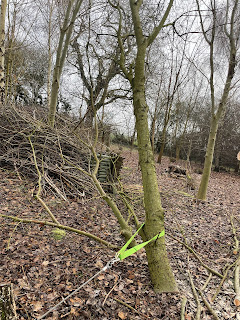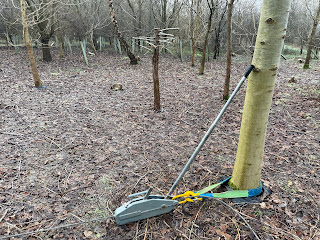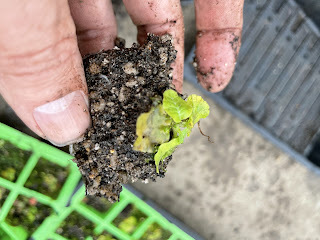A small dam keeps the water level up in the pond for about 8 months of the year. It is only fed by water runoff from local fields, so dries up to mud in mid-summer. So there are no fish, but lots of insects and amphibians. The runoff is from a cattle farm, so there is a lot of nutrients in the water, making the pond pretty eutrophic - but it is a nice boggy area.
However heavy water flow during the winter has undermined one side of the dam so that water is coming under one side of the dam rather than over the top of the sluice.
To fix this needs a repair on the upstream side of the dam. Any downstream repair will just get eroded.
So the first phase was to hammer in a series of stakes, using recycled tree stakes from the wood. These were put in forming a semi-circle between the central part of the dam and the bank.

I then needed to pack the area above the dam with clay. Luckily the woodland and meadow is on the clay and gravel left by an ice age lake. So dig down almost anywhere and you find clay. In this wheelbarrow the yellowish earth on the right has a high proportion of clay.

This clay was packed into the space between the new stakes and the dam, if effect enlarging the bank above the dam to block any water movement from above.

Hopefully this will fix the problem, but I am going to keep a close eye on any erosion of water along the face of the dam.















